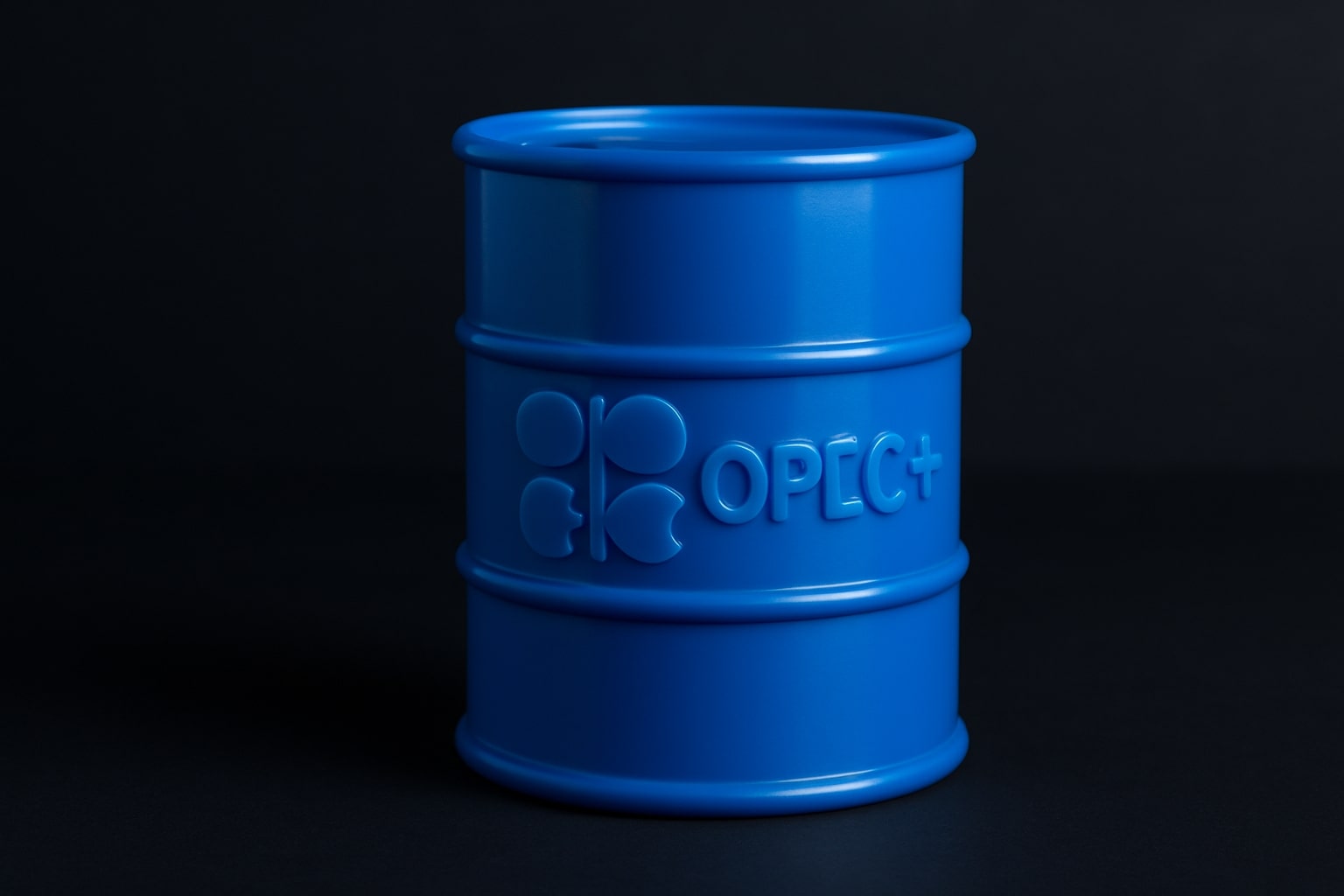
Oil Price - WTI (CL=F) and Brent (BZ=F) Hold $62–$66 as Oversupply Risks Build
OPEC+ begins easing cuts, Asian imports rise, but Wall Street forecasts Brent below $60 and WTI facing pressure from U.S. shale hedging | That's TradingNEWS
WTI (CL=F) and Brent (BZ=F) Prices Steady After OPEC+ Eases Cuts
West Texas Intermediate (CL=F) is trading near $62.53 per barrel, recovering from last week’s 2% slump, while Brent (BZ=F) is holding close to $66.13. OPEC+ has started unwinding production cuts, returning 137,000 barrels per day in October, part of the 1.65 million bpd curbs introduced in April 2023. The move is smaller than earlier rollbacks of 550,000 bpd and was interpreted by markets as modest, sparking a rebound after prices sold off sharply on Friday. Saudi Arabia remains the main source of spare capacity, while Russia, Iraq, and the UAE are already pumping above their quotas, meaning actual new supply may be lower than the headline figure.
OPEC+ Policy Meets Demand Peaking Concerns
Analysts expect oversupply in the fourth quarter as summer demand ebbs and inventories build. Wall Street forecasts now point to Brent slipping below $60 per barrel before year-end, with downside risk toward the mid-$50s in 2026 if OPEC+ accelerates its unwinding. FGE NexantECA warns that a drop to $55 would pressure U.S. shale output, potentially setting the stage for higher prices later in 2026. For now, OPEC’s cautious tone indicates it will monitor demand before adding more barrels, but the market remains nervous about slowing consumption in the U.S., Europe, and parts of Asia.
WTI (CL=F) Technical Picture and Range-Bound Signals
WTI crude has carved out a trading range between $62 support and $66 resistance. Price action suggests attempts at forming a double bottom near the $62 zone, though heavy global supply caps upside. If CL=F can break above $66, short covering could lift prices toward $69, but fundamentals argue against a sustained breakout given rising production. Brent shows a similar setup, with $65 acting as a floor and resistance near $69, creating a double-top/double-bottom formation. Traders remain cautious, watching whether the range holds or breaks down into the low $60s.
China, India, and Stockpiling Trends Impact BZ=F Outlook
China continues to drive imports higher, stockpiling crude as it prepares for stronger 2026 demand. Analysts estimate Chinese buying alone could displace nearly a third of global LNG imports, underscoring the energy mix shift. India has reaffirmed commitments to continue Russian crude purchases, ensuring discounted flows remain steady despite Western sanctions. This undercuts Brent’s premium pricing power, keeping the spread with WTI near $4, narrower than the $8–$10 levels seen in 2022. With OPEC’s basket price hovering at $71.32, demand signals from Asia remain critical in shaping the Brent curve.
Insider Flows and Market Positioning in Oil Futures
CFTC data shows managed money cutting long positions in both Brent and WTI, with speculative length in CL=F down nearly 20% from July highs. This reflects waning confidence in a bullish breakout as supply rises. Commercial hedging has picked up, especially among U.S. shale producers who are locking in sales above $60. No major insider corporate transactions have surfaced this month among listed U.S. oil majors, but Saudi Aramco’s steady dividend policy and announced refining expansions in South Korea reflect confidence in longer-term demand.
Read More
-
AbbVie Stock Price Forecast - ABBV at $229 Turns the Humira Cliff Into a 2026 Growth Engine
02.01.2026 · TradingNEWS ArchiveStocks
-
XRP Price Forecast - XRP-USD Nears $2 as $1.80 Support and Shrinking Supply Point to $2.60 Target
02.01.2026 · TradingNEWS ArchiveCrypto
-
Oil Price Forecast - Oil Slide Into 2026: WTI Stuck at $57, Brent at $60
02.01.2026 · TradingNEWS ArchiveCommodities
-
Stock Market Today: Nasdaq Hits 23,467 as Nvidia (NVDA), Micron (MU) and Baidu (BIDU) Drive AI Surge
02.01.2026 · TradingNEWS ArchiveMarkets
-
GBP/USD Price Forecast: Pound Holds 1.3450 as Fed–BoE Split Keeps Bulls Aiming at 1.37
02.01.2026 · TradingNEWS ArchiveForex
Macro Drivers: U.S. Jobs, Dollar Weakness, and Fed Policy
Crude’s rebound coincided with weak U.S. payrolls, just 22,000 jobs added in August, pushing the dollar lower and bolstering commodity prices. Fed cut odds above 90% for September increase the likelihood of softer rates, providing a tailwind for oil even as fundamentals remain oversupplied. U.S. gasoline futures hover around $1.96 per gallon, down 0.2%, signaling muted domestic demand momentum.
Oil (CL=F, BZ=F) Verdict
Oil markets face opposing forces: OPEC+ restraint and Asian buying support prices, while oversupply and slowing demand pressure them lower. WTI at $62–$63 and Brent near $66 suggest a fragile balance. With downside targets below $60 still in play for year-end and muted speculative appetite, crude remains under pressure. Based on current data, oil should be viewed as a Hold, with bias tilted bearish unless Asian imports surprise to the upside or U.S. shale activity slows sharply.
















